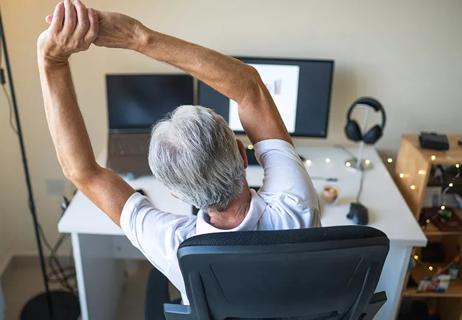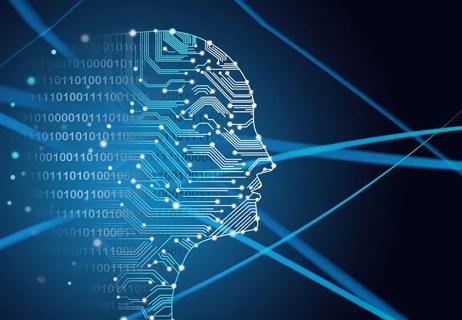From physical and biofeedback therapy to nerve ablations and blocks, there are many nonsurgical options for managing back pain

Sooner or later, back pain comes for us all. And whether it’s the result of scoliosis or stenosis, bulging disks or bone spurs, pinched nerves or poor posture, that pain can really cramp your style.
Advertisement
Cleveland Clinic is a non-profit academic medical center. Advertising on our site helps support our mission. We do not endorse non-Cleveland Clinic products or services. Policy
Surgery can cramp your style, too. But if your pain is poorly managed enough, surgery can start to feel like the best available option. For some people, it is. But most back pain can actually be treated without going under the knife. There’s a wide range of treatments and therapies out there that are worth giving a try, including some you’ve probably never heard of!
Pain management specialist Kristin Powers, MD, shares 12 alternative treatments for chronic back pain, offers tips for preventing the pain before it starts and explains when to talk to your doctor about surgery.
If you have chronic back pain, there may be effective treatments besides surgery that will help, depending on your particular condition.
“It's important to see your doctor and discuss the options,” Dr. Powers says.
Here are some of the nonsurgical treatment options your provider may review with you:
“Physical therapists can help you recover from an injury or manage a chronic condition,” Dr. Powers explains. A physical therapist will tailor an exercise routine to your specific condition and teach you proper form.
“The goal with physical therapy is to learn the exercises they teach you and to perform them on your own at home multiple times a week,” she continues. “Physical therapy plays an important role in maintaining strength, mobility and function as we age.”
Advertisement
There’s a wide range of medications out there that have been proven effective for back pain. Nonsteroidal anti-inflammatory medicines (NSAIDs) like ibuprofen, naproxen and aspirin are a great option for addressing acute pain caused by an injury or exacerbation of a chronic condition.
It can be easy to forget how powerful the anti-inflammatories we all keep in our medicine cabinets are. But Dr. Powers is clear: Over-the-counter anti-inflammatories should only be used on a short-term basis — and sparingly at that. She also notes that people with chronic kidney disease or gastric ulcers need to be extra cautious.
While they’re great for relieving inflammation, NSAIDs aren’t going to be as helpful for all back conditions. According to Dr. Powers, muscle relaxers are more useful for dealing with spasms, spasticity and musculoskeletal pain.
There’s one other class of medications that bears mentioning: opioids.
“I’m frequently asked about the role of opioids in treating chronic back pain,” Dr. Powers shares. “The research on this topic has been very convincing. It tells us we should avoid using them for treating chronic back pain in the long term.”
Opioids don’t make sense for treating chronic back pain because of the way they work.
“We build up a tolerance to these medications,” she says, “which means we have to increase the dosage over time just to get the same amount of pain relief.” But the recommended dosage is recommended for a reason. High doses of opioids can cause serious side effects that impact multiple organ systems. They’re also habit-forming.
“Opioids are not an effective, safe therapy for chronic back pain,” Dr. Powers concludes.
Allergies, intolerances, sensitivities, dietary restrictions, food preferences: You may be surprised just how much the stuff you eat (or don’t eat!) can impact your pain levels. Dr. Powers suggests connecting with a dietitian or trying an elimination diet to identify foods that trigger inflammation and pain.
“Healthy eating habits are especially important for people living with diabetes who experience chronic pain,” Dr. Powers notes. “They frequently notice that when their blood sugar isn’t well managed, their pain is worse!”
This therapy, performed by a Doctor of Osteopathic Medicine (DO), helps your body to realign itself by gently moving, massaging and stretching your muscles and joints.
The sensation might take some getting used to, but TENS therapy can help relieve back pain, especially if it’s caused by muscle spasms.
Advertisement
“TENS stands for transcutaneous electrical nerve stimulation,” Dr. Powers explains. “The device sends an electrical current to electrodes strategically placed on your back.”
Physical therapists and chiropractors both tend to have TENS units on-site, and some insurance plans will even cover the cost of a personal TENS unit. If not, you can also easily purchase one yourself for home use.
A mindfulness practice can help you to redirect your thoughts, taking you out of your discomfort and improving your ability to cope with the stress pain causes. Some approaches can even help you change your relationship with pain. The list of mindfulness interventions is long and includes practices like breathwork and body scans, mantra meditation and intentional movement.
If you’ve been looking for a reason to splurge on a massage, you’re welcome! While you’ve probably heard of Swedish and deep-tissue massages, they’re just the tip of the pain-relief iceberg. Trigger point, myofascial release and shiatsu massages can help, too. You should also consider speaking to your provider about rolfing, reflexology and craniosacral therapy.
We’re not saying that your back pain’s all in your head … but a good chunk of it is! That’s because we process pain in the brain and central nervous system. As a result, our mental and emotional condition can impact our physical condition. Cognitive behavioral therapy (CBT), also known as “talk therapy,” can teach you how to use the mind-body connection to your advantage.
Advertisement
“It helps you develop the skills you need to process and move beyond negative thoughts,” Dr. Powers explains. “Doing that makes it easier to cope with pain and disability.”
Like CBT, biofeedback therapy requires sensors, monitoring equipment and medical instruments.
“It’s a complementary therapy,” Dr. Powers clarifies, “meaning you use it in addition to, not instead of, other treatments.”
Over several sessions, you and your practitioner figure out how your body responds to certain physiological changes. Through trial and error, you’ll learn how to use that information to better address pain and a host of other health concerns.
Those tiny needles can pack quite a pain-relief punch! We don’t yet know exactly how this traditional Chinese medicine (TCM) practice alleviates low back pain. Some researchers suspect it works by acting on the central nervous system and stimulating an anti-inflammatory response.
These semi-invasive medical procedures aren’t right for every back condition, but coupled with physical therapy and medication, pain procedures like epidurals, nerve blocks and ablations can relieve pain and improve function. Dr. Powers recommends considering these options before you pursue back surgery.
Advertisement
“Talk to your provider to find out if these procedures could be considered as part of your comprehensive pain management plan,” Dr. Powers advises.
If your back’s hurting, it’s hard to get excited about exercise. But what if there was a slow, low-intensity exercise out there that could help with your pain without putting you at risk for injury?
Good news: There are several practices — like yoga, Pilates, tai chi and qigong— that can relax the mind, improve flexibility, build strength, extend range of motion and improve balance.
At some point in their lives, 8 out of 10 Americans will experience back pain. While it’s not possible to prevent all back pain or injury, here are some things you can do to keep your back healthy:
So, when is it time to talk with your provider about going under the knife? Dr. Powers says the following are all good reasons to start that conversation:
“Surgery may not always be the best option for treating chronic back pain. Your provider may recommend more conservative options before recommending surgery,” Dr. Powers reiterates. But sometimes, those other methods don’t do the trick, making surgery the best next step.
“For certain conditions, surgery can be highly effective,” she adds. “Your providers can help you get surgical opinions and help you make an informed decision about how to move forward."
Together with your healthcare provider, the goal is to find a combination of therapies that will help you manage your back pain, or — hopefully — put it behind you altogether.
Learn more about our editorial process.
Advertisement

It’s always a good idea to let a healthcare provider know about any back pain you’re experiencing, especially if it results from trauma or persists longer than three months

Stretch before heading outside, keep proper form and avoid jerking or twisting to throw snow

The short answer from a pain specialist

A little know-how can prevent aching — or injury

A good stretch you don't have to be a superhero to master

5 noninvasive options for relief

Artificial intelligence systems can analyze data in milliseconds to aid decision-making

Type 2 diabetes isn’t inevitable with these dietary changes

Applying a hot or cold compress can help with pain